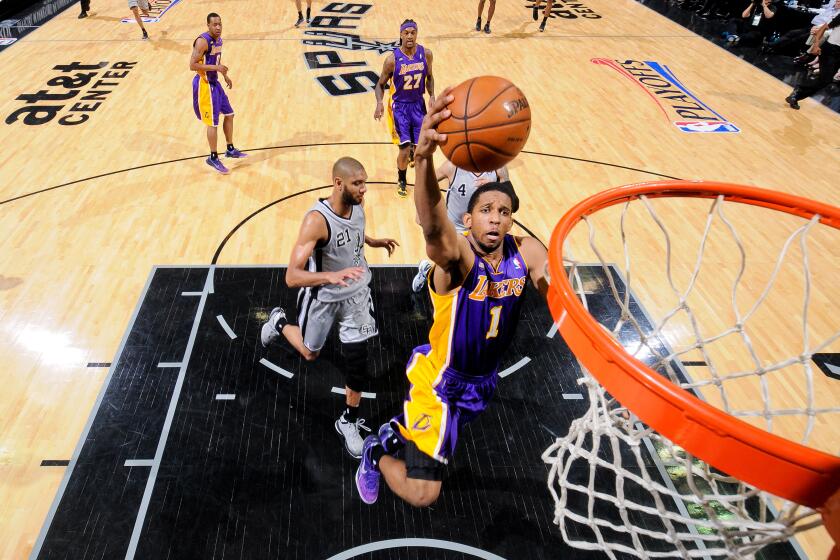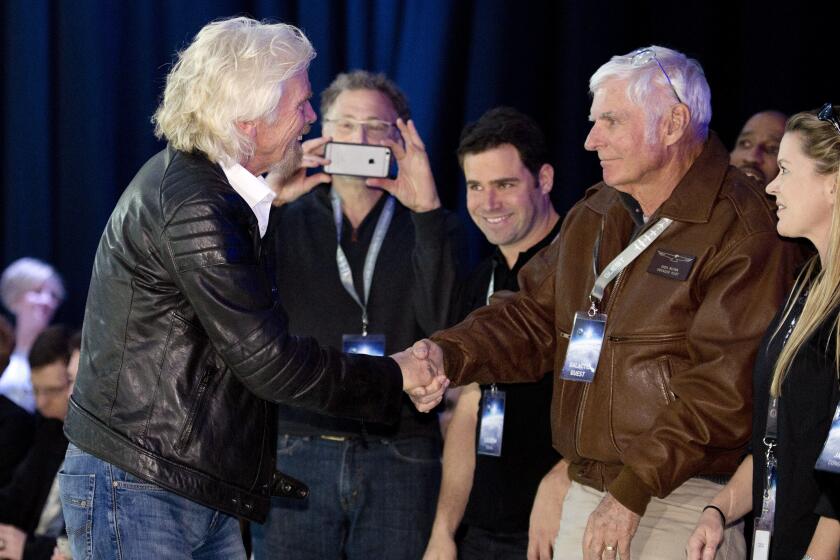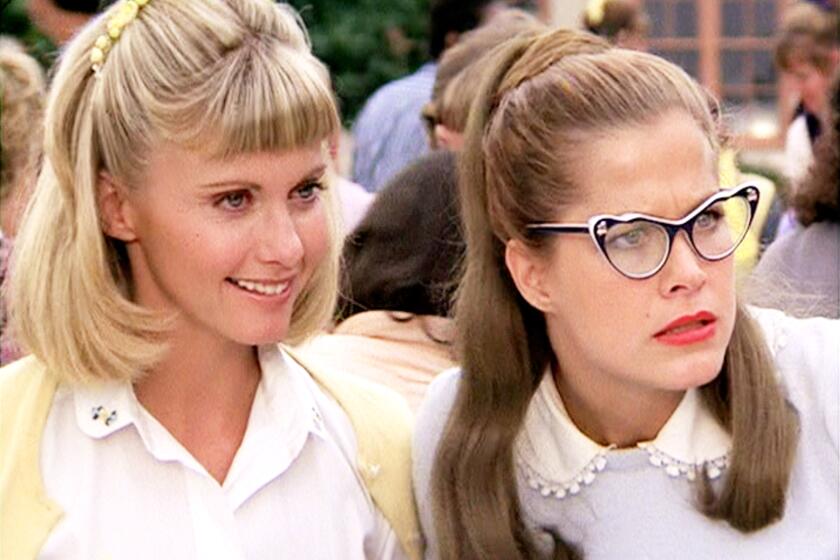Ed Sabol dies at 98; founder of NFL Films
Ed Sabol, whose innovative techniques for NFL Films helped raise pro football to America’s favorite sport and earned him a niche in the Pro Football Hall of Fame, has died. He was 98.
Sabol died Monday at his home in Scottsdale, Ariz., the league announced. No cause was given.
“The creation of NFL Films in the early 1960s no doubt played a significant role in the growth of popularity of the National Football League,” the Hall of Fame noted in announcing Sabol’s election as a contributor in February 2011. “The man behind the idea of NFL Films was Ed Sabol. ... With [his] vision, NFL Films has revolutionized the manner in which sports are presented on camera.”
Both major league baseball and college football outstripped the NFL in popularity — the NFL also was locked in a spirited battle with the upstart American Football League — when Sabol came onto the scene in 1962.
An amateur cinematographer and former actor who longed to escape his job as a sales representative for his father-in-law’s menswear factory in Philadelphia, a 45-year-old Sabol took a bold gamble. He contacted NFL Commissioner Pete Rozelle, offering to double the previous bid of $1,500 for the rights to film the 1962 championship game, which turned out to be between Allie Sherman’s New York Giants and Vince Lombardi’s Green Bay Packers in Yankee Stadium.
Rozelle went for the deal and Sabol, whose previous experience consisted of making home movies of his family — son Steve playing peewee and high school football was a frequent star — suddenly had to come up with a production company. Sabol called Steve home from Colorado College and father and son quickly formed Blair Motion Pictures, named after Sabol’s daughter, and hired a film crew.
It was Sabol’s hope that, through the use of multiple cameras shooting color film — black-and-white was the norm for sports films — close-up shots of the players and coaches, slow-motion photography, stirring background music and authoritative narration, his film would present the drama of the game much in the manner of a Hollywood extravaganza.
Then came game day, Dec. 30, 1962, a bitterly cold day in New York. Cameras broke. Lenses froze. Film cracked. Sabol was a nervous wreck.
Recalling the day for CNN.com, he said: “At that particular moment, I was not interested in doing another game nor concerned about the future. I just wanted to get out of the stadium, get home and warm up.”
Sabol’s use of multiple cameras, however, saved the day and the film. When it was developed, spliced and edited a few weeks later, Sabol was so proud of the result that he titled the production “The NFL’s Longest Day,” borrowing the title of a World War II movie popular at the time.
The film, narrated by Philadelphia newscaster John Facenda, was greeted with great enthusiasm, and Sabol was on his way. For two years, he showed his NFL films wherever he could, at church groups, school gatherings, service club meetings. Then he went back to Rozelle, proposing that the NFL should have its own film company and that each of the 14 teams then in existence should have a highlights movie after every season. Some of the owners balked but, again, Rozelle liked the idea and persuaded each team to come up with $20,000 in seed money.
------------
FOR THE RECORD
Feb. 10, 9:59 a.m.: In this obituary, John Facenda is identified as the narrator of NFL Films founder Ed Sabol’s first film, “The NFL’s Longest Day.” Chris Schenkel narrated that production. Facenda later joined NFL Films as a narrator.
------------
With that, Sabol converted his independent Blair company into NFL Films, a league subsidiary, and set about revolutionizing a genre. Microphones on coaches? Sabol’s idea. Keeping a camera on the quarterback to show what happens after the pass has been thrown? Sabol’s idea. Close-ups of the trench warfare showing the players’ blood, sweat and, sometimes, teeth? Sabol’s idea. Reverse-angle replay? Sabol’s idea. Ground-level slow motion? Sabol’s idea.
In fact, it was Sabol’s idea to have one camera shooting nothing but slow motion so that whatever plays he wanted in slo-mo would be available.
Sabol bestowed a concise command on his cameramen: FLAP. “Finish like a pro,” he told them. “I want to see the cleats kicking the dirt up, I want to see the sweat, I want to see the blood.”
With ever-growing exposure, at least some of it traced directly to Sabol’s work, the NFL took off in the ‘60s, eventually putting down the rebellious AFL and absorbing its strongest teams, thus setting the stage for what has become the most-watched annual single-day sporting event in the country, the Super Bowl.
Born Edwin M. Sabol on Sept. 11, 1916, in Atlantic City, N.J., he grew up in Blairstown, N.J., where, at Blair Academy, he excelled in several sports, most notably swimming. As a senior, he set a world interscholastic record for the 100-yard freestyle race, then continued his aquatic pursuits after accepting a scholarship to Ohio State University. He was selected to the U.S. Olympic team for the 1936 Games in Berlin but refused to swim before Hitler in Nazi Germany.
After graduation, he acted on Broadway, got married, served in the Army under Gen. George S. Patton during World War II, then came home and went to work for his father-in-law. Among the wedding presents given him and his bride Audrey was a $100 gift certificate. Sabol used it to buy a 16-mm movie camera and began recording family activities, significant and otherwise, eventually using that experience to leap to the big time.
He served as president of NFL Films until 1985, turning that role over to Steve, and continued as chairman of the company until his retirement in 1995. During his tenure, NFL Films won 52 Emmy awards. Besides the Pro Football Hall of Fame, he was elected to the Swimming, Broadcasting and Jewish halls of fame.
Sabol’s son, Steve, died of brain cancer in 2012. He is survived by his wife, Audrey; his daughter, Blair; and a grandson.
Kupper is a former Times staff writer.
More to Read
Start your day right
Sign up for Essential California for the L.A. Times biggest news, features and recommendations in your inbox six days a week.
You may occasionally receive promotional content from the Los Angeles Times.






